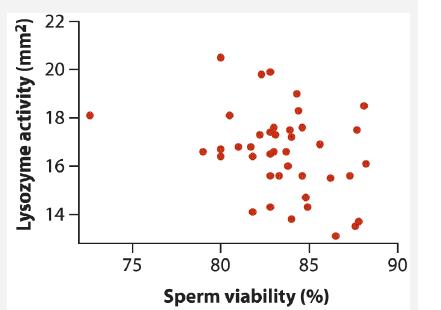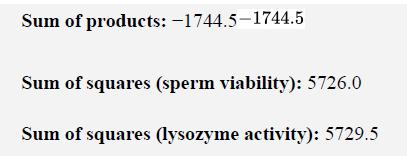According to the immunocompetence handicap hypothesis, males of a species evolve high reproductive effort to the point
Question:
According to the immunocompetence handicap hypothesis, males of a species evolve high reproductive effort to the point that they divert resources away from immune function. To test this, Simmons and Roberts (2005) measured sperm viability and immune function in lab-raised male crickets to test whether male reproductive effort affects immune function.
The data in the following graph show male sperm viability and lysozyme activity, an important defense against bacterial infection. Each point is the average of the males in a single family of crickets. Lysozyme activity is measured as the area of clear region around an inoculation of 2 μl of hemolymph onto an agar plate containing bacteria. The total sample size n is 41.

a. What assumption of linear correlation analysis is violated by these data? Explain.
b. Assuming that transforming the data doesn’t help, what is the most appropriate method to test the null hypothesis of no correlation between male sperm viability and male lysozyme activity?
c. When we applied the most appropriate method to these data, we obtained the following numbers based on the ranks of sperm viability and lysozyme activity:

Using these figures, test the hypothesis that sperm viability and male lysozyme activity are correlated.
d. What assumptions have you made in part (c)?
Step by Step Answer:

The Analysis Of Biological Data
ISBN: 9781319226237
3rd Edition
Authors: Michael C. Whitlock, Dolph Schluter





